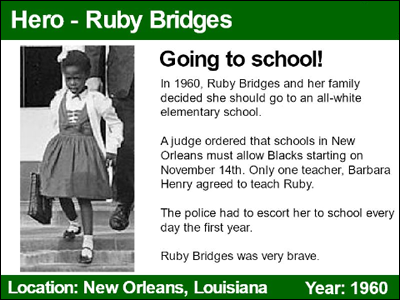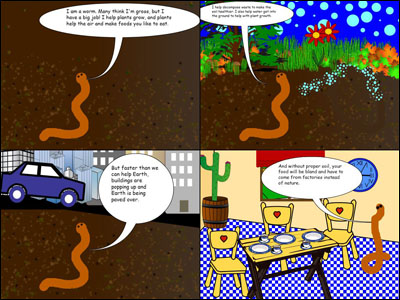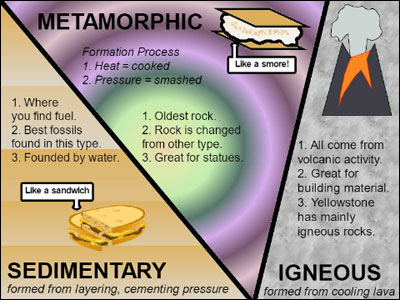
Ideas for helping you move student work from ordinary knowledge to extraordinary thinking

New demands for literacy instruction require an emphasis on both literature and informational text. But student work with informational text doesn’t have to be a dry regurgitation of facts. In fact, putting a creative spin on student performance tasks can turn informational text projects from ordinary into extraordinary.
You don’t have to undertake a massive instructional shift to keep students from rote work and a simple copy and paste. Here are some ideas for unique and creative projects and products that get students thinking about the content they are reading.
Trading cards are a form of informational text that even young students are familiar with, even if they aren’t baseball or Pokémon fans. Creating a classroom set of trading cards for historical figures, rainforest animals, or even elements on the periodic table, provides a fun way to learn, and review, information about a topic you are studying.

The first time a child gets a pack of trading cards, they may read each one top to bottom and right to left; but once they start a collection, they learn to use the features of nonfiction texts to quickly find information. Asking them to create their own trading cards, builds their fluency in utilizing headings, labels, and images as they use informational texts in the future.
Because trading cards are small, students must also carefully choose which information they need to include for their user. As they work to summarize, students must evaluate information and determine its importance, improving their comprehension of the topic.
The process of creating a trading card, printing it out, and sharing it with classmates, also helps students connect the work they are doing in the classroom with their lives outside of it.
Like trading cards, students are seeing more and more people outside the classroom reading electronic books and may even be using a digital textbook at school. Students are motivated to create and publish their own eBooks, and see their efforts as valuable; especially when the intention is to publish them for an audience outside of the classroom.
Emerging readers and writers may need to scaffold their research and writing with worksheets that outline what they should include, but older and more experienced learners may need to be pushed so that they don’t simply copy and paste information directly from their research into their eBooks. You can avoid this problem by asking them to create books in ABC, Associative Letter, or even Fact or Fiction style.
ABC Books
The content in an ABC book is organized around the letters of the Alphabet. For example, an ABC Book on the Desert of the American Southwest might include pages like: A is for Armadillo, B is for Bighorn Sheep, and C is for Coyote. The example below highlights the ocean environment.
Associative Letter
You might also try an associative letter project. In this format, all information is organized around a single letter. For example, an associative letter report on the Revolutionary War might contain pages like: Militia, Massacre, and Midnight Ride.
Fact or Fiction?
In this format, students craft individual statements about their topic followed by the words “fact or fiction?” on a page. Then, they write the answer (fact or fiction) and provide evidence to support their conclusion.
Creating a comic strip is also a great way to get students thinking about the informational texts they are reading. Like trading cards, the limited amount of space in a comic’s panels requires students to choose the most significant points in a text or story. This summarizing, combined with the extensive use of nonlinguistic representations in comics, improves student comprehension.

Great writing combines all three forms of written communication expressed in the Common Core State Standards; narrative, informational, and argument writing. Creating comics based on informational texts helps students more easily connect this information as they develop narratives to share information or arguments to raise awareness and change behavior. Sequencing and logic are crucial to good storytelling, and students quickly learn that they can’t simply jump forward in time or around in space.
Creating a Wanted poster for a person, place, or thing is a highly engaging performance task that requires students to think but doesn’t require a lot of technical expertise to create.
Students can begin Wanted posters with simple identifying physical features and then move further to include information about qualities that make an object or person unique and connect to its time and place in the world. For example, asking students to identify a “last seen” or “often found in” location provide an opportunity for them to demonstrate what features and characteristics look like in action.
While infographics are popular in the media right now, they are more than just a passing fad. These visual representations of knowledge and information make complex ideas and large amounts of data easy to understand and have quickly become a powerful form of digital-age communication.

Crafting an infographic to help convey the important information and ideas is a great way to get students thinking more deeply about the information they are reading. To craft an effective infographic, students must identify:
Yes, infographics can be highly complex if they are based on large amounts of complex data. But infographics can also be clear statements of priority and action, like a Top Ten list.
Science and social studies are filled with big ideas and concepts, not to mention remote time periods and locations. To help students make sense of some of these concepts, ask them to craft an interview with a connected object. For example, students could interview:
Crafting a fictitious interview can help bring abstract scientific concepts to life and make history more personal. It also helps students learn how to ask questions. Their formulation of the questions also helps you better evaluate their comprehension of big ideas behind the facts they find.
Because they are written in first-person perspective, students must empathize with their subject and can’t simply copy and paste information or regurgitate facts. Interviewing helps students identify the perspective of a historian or scientist as they personify the object with gender and other human characteristics.
News broadcasts are much more sophisticated and time consuming but make for a great culminating task in the content classroom. Before an end of the year review, or even exam, ask teams of students to choose a topic you studied and share their knowledge in this engaging format.
Like comics, writing a News Broadcast requires students to use narrative writing techniques to deliver information. Crafting a News Broadcast helps students think about techniques the media uses to attract viewers and keep them watching, building essential media literacies.
Many important issues today, like climate change and health, can help you connect your students to the content they are learning in science and social studies. Asking students to craft a public service announcement (PSA) to raise awareness or change behavior, lets them know their work and efforts are valuable and can have a real impact on the world around them.
Science, with its connection to issues that many students are passionate about, is a great place to ask students to develop public service announcements. Creating a PSA is also a powerful performance tasks for social studies and requires students to practice skills in all four dimensions of the C3 Framework for Social Studies State Standards.
Developing PSAs provides a great connection to skills learned in English Language Arts classes as well. Students must research deeply, identify fact versus opinion, develop claims and the evidence to back them to write an effective argument.
Choose the product or performance task that you think will work best in your classroom with your students and which most effectively provides them with an opportunity to practice reading and writing in real-world situations, with a real-world audience. Creative performance tasks like these products not only lets students know their work has value and meaning it provides an opportunity for students to ask their own questions as they make sense of content and find meaning in the curriculum, not just provide a “correct” answer.

Follow us on Instagram for daily inspiration

Create a thought web, cluster, flowchart, or other graphic organizer for a lesson
8 first projects to get students using technology
Creative, digital book reviews
Fun and powerful ideas with animated characters

Wixie
Share your ideas, imagination, and understanding through writing, art, voice, and video.

Rubric Maker
Create custom rubrics for your classroom.

Pics4Learning
A curated, copyright-friendly image library that is safe and free for education.

Wriddle
Write, record, and illustrate a sentence.

Get creative classroom ideas delivered straight to your inbox once a month.
Topics